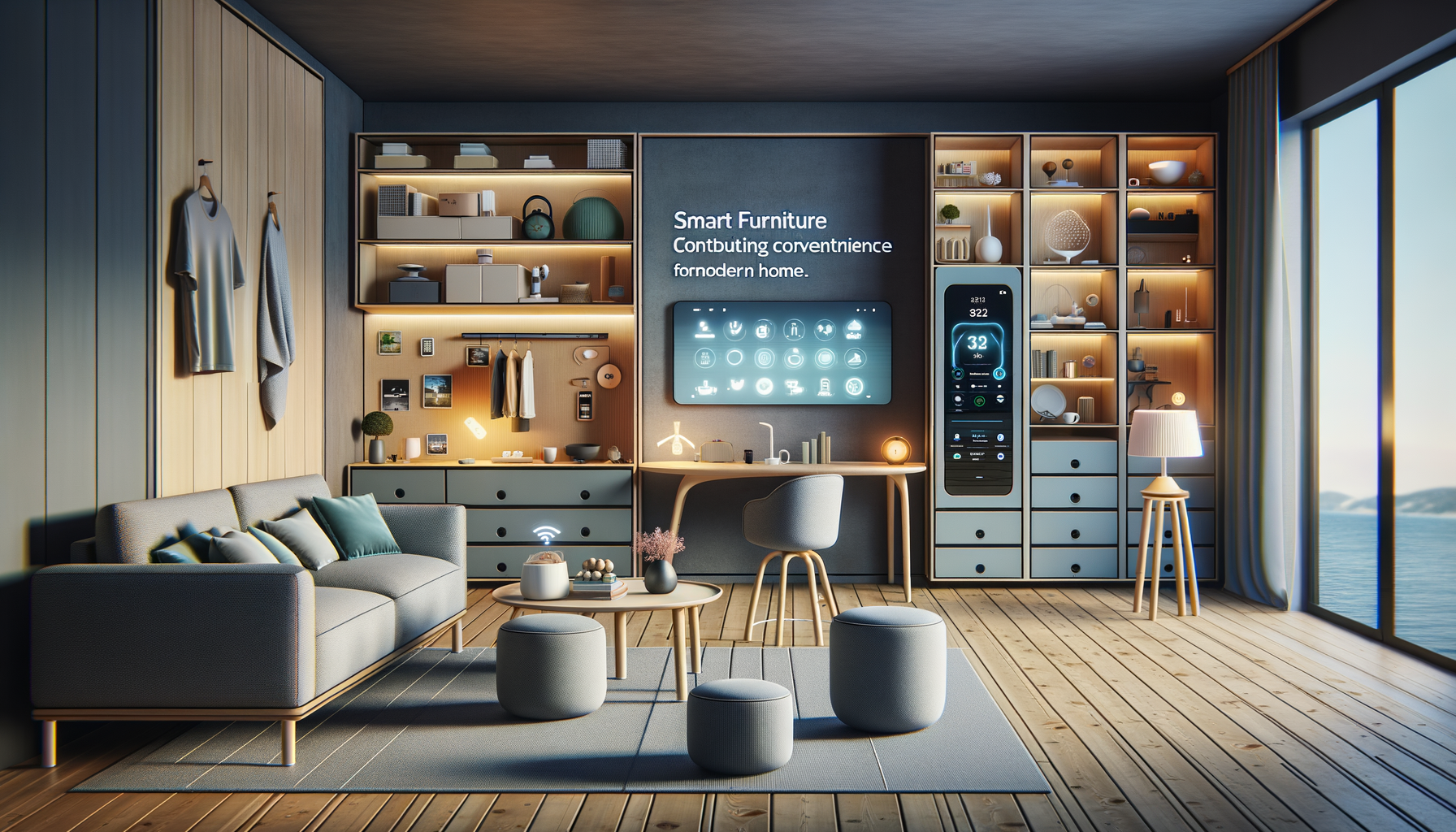The Evolution of Smart Furniture
Smart furniture represents a significant evolution in home design, blending technology with traditional furnishings to create pieces that offer more than just aesthetic appeal. These innovative pieces have emerged from the growing demand for multifunctional, space-saving solutions that cater to the modern lifestyle. As urban living spaces become more compact, the need for furniture that can adapt and serve multiple purposes has grown. Smart furniture addresses this need by integrating technology to enhance usability and functionality.
One of the key drivers behind the rise of smart furniture is the advancement of technology itself. With the proliferation of smart home devices, the integration of technology into furniture was a natural progression. This has led to the development of pieces like beds with built-in speakers, tables with wireless charging capabilities, and sofas with integrated lighting and USB ports. These features not only add convenience but also contribute to a connected living environment.
Moreover, smart furniture is designed with sustainability in mind. Many pieces are crafted using eco-friendly materials and are built to last, reducing the need for frequent replacements. This aligns with the growing consumer preference for sustainable products, making smart furniture a popular choice for environmentally conscious individuals.
Features and Benefits of Smart Furniture
Smart furniture offers a multitude of features that enhance the living experience. These features are designed to provide comfort, convenience, and efficiency, making daily life easier and more enjoyable. Here are some of the standout features commonly found in smart furniture:
- Multifunctionality: Smart furniture often serves multiple purposes, such as a coffee table that doubles as a work desk or a bed with storage compartments.
- Connectivity: Many pieces are equipped with Bluetooth or Wi-Fi capabilities, allowing users to control them via smartphone apps or voice assistants.
- Energy Efficiency: Smart furniture is designed to be energy-efficient, with features like LED lighting and power-saving modes that help reduce electricity consumption.
- Space Optimization: Compact and versatile designs make smart furniture ideal for small living spaces, maximizing the use of available space.
The benefits of smart furniture extend beyond functionality. By incorporating technology, these pieces can improve the overall ambiance of a home, providing a seamless blend of form and function. They also offer a level of customization that traditional furniture cannot, allowing users to tailor their living environment to their specific needs and preferences.
Popular Types of Smart Furniture
As the popularity of smart furniture grows, a variety of innovative designs have emerged to cater to different needs and preferences. Some of the most popular types of smart furniture include:
- Smart Beds: These beds often come with features like adjustable firmness, built-in speakers, and under-bed lighting. Some models even include sleep tracking capabilities to monitor and improve sleep quality.
- Smart Desks: Ideal for remote work and home offices, smart desks may include height-adjustable surfaces, integrated charging ports, and cable management systems to keep workspaces tidy and efficient.
- Smart Sofas: These sofas often feature USB ports, wireless charging pads, and built-in speakers, providing a comfortable and connected seating experience.
- Smart Tables: Coffee tables with built-in refrigerators, wireless charging, and Bluetooth speakers are becoming increasingly popular, offering a blend of entertainment and functionality.
Each type of smart furniture is designed to enhance the user’s lifestyle, providing convenience and efficiency in everyday tasks. Whether it’s a bed that helps improve sleep quality or a desk that promotes productivity, smart furniture offers solutions that cater to the demands of modern living.
Integrating Smart Furniture into Your Home
Incorporating smart furniture into your home can transform your living space into a more efficient and comfortable environment. To make the most of these innovative pieces, it’s important to consider how they fit into your existing decor and lifestyle. Here are some tips for integrating smart furniture into your home:
- Assess Your Needs: Identify the areas in your home that could benefit from smart furniture. Whether it’s enhancing your home office setup or optimizing your living room, understanding your needs will help guide your choices.
- Consider Compatibility: Ensure that the smart furniture you choose is compatible with your existing smart home devices. This will allow for seamless integration and control.
- Focus on Functionality: While aesthetics are important, prioritize functionality and practicality. Choose pieces that offer the features you need to enhance your daily life.
- Plan Your Space: Smart furniture is designed to optimize space, so consider how each piece will fit into your room layout. Measure your space carefully to ensure a perfect fit.
By thoughtfully selecting and incorporating smart furniture, you can create a living space that is not only stylish but also highly functional and efficient. These pieces can enhance your home environment, making it more comfortable and enjoyable for you and your family.
The Future of Smart Furniture
The future of smart furniture is promising, with continuous advancements in technology paving the way for even more innovative designs. As technology evolves, we can expect to see smart furniture that offers greater connectivity, enhanced automation, and improved sustainability. Here are some trends to watch for in the future of smart furniture:
- Increased Automation: Future smart furniture may include more automated features, such as self-adjusting surfaces and voice-activated controls, making them even more user-friendly.
- Enhanced Connectivity: With the expansion of the Internet of Things (IoT), smart furniture will likely offer greater connectivity with other smart devices, creating a fully integrated home ecosystem.
- Sustainable Designs: As sustainability becomes a priority, smart furniture will likely be made from more eco-friendly materials and designed to minimize energy consumption.
- Personalization: Advances in technology will allow for greater personalization, enabling users to customize smart furniture to suit their specific needs and preferences.
As the demand for smart furniture continues to grow, manufacturers are likely to focus on creating pieces that offer even more value and convenience. The integration of cutting-edge technology with thoughtful design will ensure that smart furniture remains a key component of modern living spaces, providing solutions that enhance comfort, efficiency, and style.



Leave a Reply